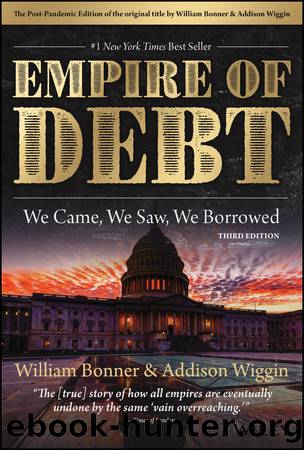The Empire of Debt by William Bonner & William Bonner

Author:William Bonner & William Bonner [Wiggin, Addison & Bonner, William]
Language: eng
Format: epub
ISBN: 9781394201976
Publisher: Wiley
Published: 2024-05-07T00:00:00+00:00
ORIGINS OF SUPPLY SIDE
When supply-side economics first appeared in the US press, real economists were perplexed. They had never heard of it. There were no university departments specializing in it. There were no peer-reviewed papers. There were no scholarly books describing it. There were scarcely any economists claiming to be supply-siders. It was, apparently, a school of thought without a school. Some wondered if it also lacked a thought.
Traditional economistsâmostly empire builders and world improvers, but of the Keynesian varietyâhad gotten themselves stuck on a teeter-totter. On one end sat inflation. On the other was employment. They could press down on one end, but the other would rise up and hit them on the chin. There seemed to be no way out. No free lunch. It seemed that they would have to pay for every something with something else. If they wanted to reduce inflation, it would cost them jobs. If they wanted to increase employment, consumer prices would rise.
Milton Friedman, among others, warned that Keynesianism was just folderol. As soon as people realized what the government was doing, the jig would be up. They would merely raise prices in anticipation of inflation, without increasing production. Stagflationârising prices in a sluggish economyâwould result. Other economists pointed out that any attempt to manipulate the business cycle would fail for the same reason. Once the policy was known, people would adjust their behavior to it, nullifying its effectiveness. They would not mistake inflation for greater demand: They would not increase production; they would not hire more workers; they would not spend more money. The only thing the policymakers could possibly do that would have an effect would be something people did not expect. And that could only be a policy of random manipulationsâwhich would cause further confusion and who-knew-what results. Keynesians, even new Keynesians, never had any real answer to this problem. But that didn't stop them. They decided to ignore it. Meddlers and empire builders can't be bothered with theoretical problems; they are too busy creating a better world!
Stagflation came in the 1970s, just as Milton Friedman had said it would. It was not the better world the Keynesian economists had hoped to create. But it was the world they got. (Like everyone else, world improvers don't get exactly what they expect; they get what they deserve.) Stagflation posed a problem with no easy solution. Prices were rising, but employment was flat. Policymakers wanted to increase employment, but they were loath to add more inflation. They could try to lower inflation, but that would hurt employment even more.
Along came the supply-siders. They had no real solution. But at least they had a way to hide the problem. What both the public and the politicians wanted, they noted, was employment without price increases. They wanted a booming economy and no inflation. Voters wanted money from government; they also wanted to lower taxes.
The trouble with traditional conservative economists was that they were always pointing out the true cost of things. âThere's no such thing as a free lunch,â was practically tattooed on their foreheads.
Download
This site does not store any files on its server. We only index and link to content provided by other sites. Please contact the content providers to delete copyright contents if any and email us, we'll remove relevant links or contents immediately.
International Integration of the Brazilian Economy by Elias C. Grivoyannis(99409)
The Radium Girls by Kate Moore(11978)
Turbulence by E. J. Noyes(7983)
Nudge - Improving Decisions about Health, Wealth, and Happiness by Thaler Sunstein(7662)
The Black Swan by Nassim Nicholas Taleb(7064)
Rich Dad Poor Dad by Robert T. Kiyosaki(6517)
Pioneering Portfolio Management by David F. Swensen(6261)
Man-made Catastrophes and Risk Information Concealment by Dmitry Chernov & Didier Sornette(5958)
Zero to One by Peter Thiel(5736)
Secrecy World by Jake Bernstein(4703)
Millionaire: The Philanderer, Gambler, and Duelist Who Invented Modern Finance by Janet Gleeson(4425)
The Age of Surveillance Capitalism by Shoshana Zuboff(4252)
Skin in the Game by Nassim Nicholas Taleb(4206)
Bullshit Jobs by David Graeber(4143)
The Money Culture by Michael Lewis(4139)
Skin in the Game: Hidden Asymmetries in Daily Life by Nassim Nicholas Taleb(3962)
The Dhandho Investor by Mohnish Pabrai(3729)
The Wisdom of Finance by Mihir Desai(3698)
Blockchain Basics by Daniel Drescher(3544)
